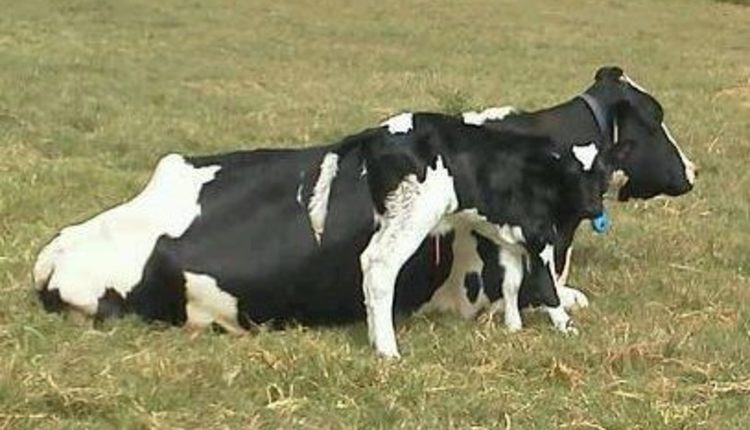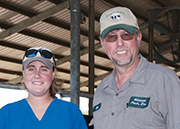
I have pulled many newborn calves since coming home from college. I am usually the go-to person when one of our employees sees a cow or heifer struggling to calve. Most of the time, it’s because the calf is in a position that is making it very difficult for the cow to deliver the calf on her own, if she even can at all.
A couple of weeks ago I had a cow that was off by herself calving in the close up pasture. We check this group periodically throughout the day, so after about an hour of steady pushing and nothing really progressing I decided to get her up into the barn to take a look.
I slipped on my palpation gloves and went in for a feel. Usually when I am checking a cow that is in labor, the calf isn’t too far of a reach, but this one made me go well past my elbow to even feel a hoof. Once I became shoulder deep and had pulled the calf closer to me as much as possible, I was able to feel a head and two hooves. As I went to pull my hand away from the calf, I noticed something next to its head like a hard sack. I felt around some more and tried to pull the hooves closer and through the canal —without any luck.
I decided that something wasn’t quite right, so I called in my dad to come take a look. Once he arrived and felt what I was feeling we decided to call the vet. Once the vet arrived and examined the cow, he decided that whatever was in there definitely wasn’t coming out through the birth canal and started a C-section.
Never in my life did I expect to see what he pulled out. It was a calf with two heads, two spines, one tail, and four legs. One of the heads had what you call hydrocephalus or fluid on the brain. (This was the hard sack that I was feeling.) The beginning of the body looked as if it were conjoined twins while the back of the body looked like a normal calf. Unfortunately, the calf was not alive.
I have heard of people having two headed calves before, but there was no way I thought I would be seeing what I saw that day. It was extremely unique and fascinating.
I have said it before… as a dairy farmer, you’re constantly changing, inventing, learning, and doing different things on a daily basis. This one, though, takes the cake for me.

Mark and Caitlin Rodgers are dairy farmers in Dearing, Georgia. Their “Father and Daughter Dairy Together” column appears every other Thursday on HD Notebook. The Rodgers have a 400-cow dairy that averages 32,000 pounds of milk. Follow their family farm on Facebook at Hillcrest Farms Inc.

“A breath of fresh air – ventilating barns"
Nigel Cook, D.V.M., University of Wisconsin-Madison
This webinar will cover basic design concepts required for effective natural ventilation and examine the reasons producers struggle to keep cows cool in summer. He will discuss ventilation systems in seven different U.S. regions.








